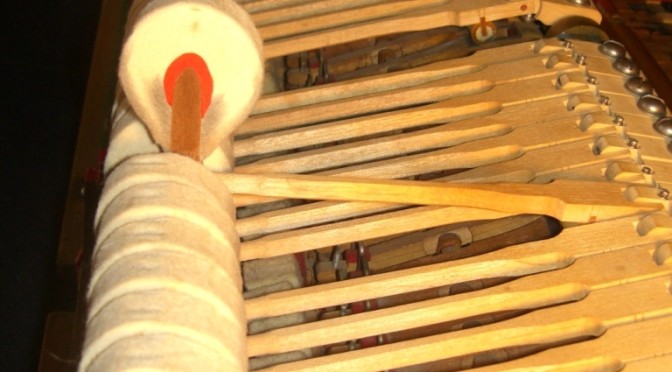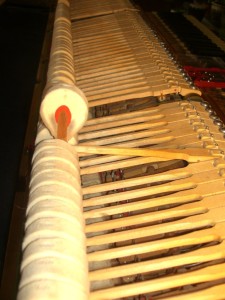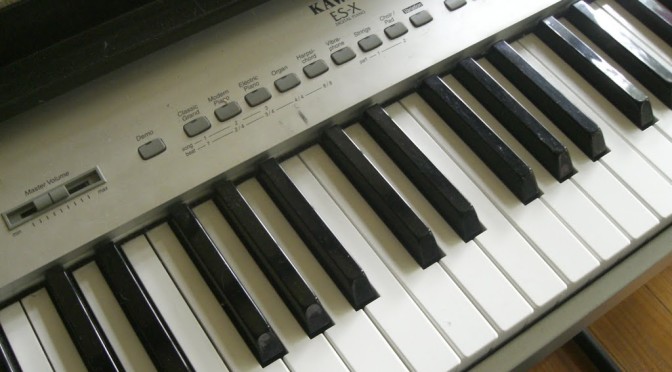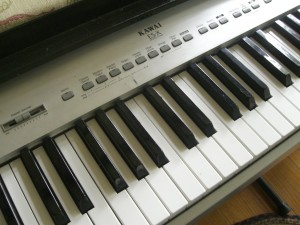It happens every year: Little Bobby is playing on a cheap keyboard, and mom and dad (and piano teacher, too!) think he’s ready for an upgrade to a real acoustic piano. (Here are some thoughts on acoustic versus digital pianos). Luckily, or so they think, they see an ad in the local advertising newspaper. All they have to do is pick it up and it’s theirs.
Two weeks, a failed tuning, and a world of disappointment later, guess who is placing an add in the paper begging someone to take the instrument off their hands?
Buying a used piano (or getting one for free) can work, but there are some considerations to take into account before you write the check or hire the mover.
Used Versus New Pianos
Obviously, new pianos come with big advantages: There no secret history of bad maintenance and mechanical problems. The piano comes with a guarantee. It probably even comes with a free tuning when you first get it delivered.
And all that comes with a gigantic price tag; Indeed, a fine new grand piano can cost as much as a fine car.
Used pianos can be a good solution. While top brand pianos such as Steinway, Bechstein, and Bosendorfer retain their value (and thus their price) over time (if they are well maintained), most pianos depreciate, and many are offered for free in community bulletin boards and online markets. The problem is that you may be inheriting someone else’s problems. And, just as with buying a used car, you could be dealing with someone who is awfully eager to sell it to you. The information you get may be not entirely accurate, or even honest.
The biggest issue with buying a used piano is its condition. Pianos are incredibly complex mechanical machines with hundreds of hidden moving parts. A crack in a piece of wood no bigger than a safety pin can render an entire key unusable. And as a non-technician, you will never even know where to look.
But all that said, if you can find a good piano technician (ask the local piano teachers for references) to look at the piano for you, you might find that a used piano is a good deal.
How to Buy a Used Piano
Prices of used pianos can vary tremendously depending on make, manufacturer, the age of the piano, how it has been maintained, and how desperate the owner is to get rid of it.
When doing your research, here are a few things to keep in mind:
- Go to a local piano store to get a benchmark, and expect to pay less from a private seller. (But also realize that maintenance issues may be more of a problem).
- When visiting stores, play lots of instruments to get a feel for different sonorities and touches.
- Ask a piano teacher for advice. Piano students quit, or upgrade their instruments, and sometimes a former student’s instrument may be for sale.
- Be sure you know what you are looking at and considering buying. A spinet is different from a console, even if the two are only a few inches different in size. A large upright may be better than a grand. Educate yourself about types and brands of pianos before you shop.
- Never buy sight unseen: If it’s a Craigslist piano or a piano advertised in your local ad newspaper, go to see (and play) it. Or pay a teacher to accompany you.
When checking out the piano, consider the following:
- Ask about tunings and maintenance. Pianos should be tuned at least twice a year, although in practicality, once is a year is probably the most you can expect most people to spring for. A piano that has not been tuned in many years is more than likely no longer going to be able to hold its tune.
- Ask about any restoration or mechanical work that has been done to the piano (new action, soundboard repairs, new strings, etc.).
- Ask where the piano has been stored or kept: If it has been near a heater or a window, it may have been damaged by heat and light.
- Don’t commit to a piano before you have had a chance to play it in tune with any annoying clicks and dings in the action repaired. Don’t trust promises that it will be “as good as new” when they tune it after you buy it. See for yourself.
- Cracks in the soundboard are not (contrary to common myth) a deal breaker, but cracks in the pinblock are.
- If you’re serious about an instrument, ask a technician to see the piano with you. (You’ll have to pay for this service, of course.)
- If buying from a store, ask what parts of the piano will be guaranteed. Most stores include a tuning with the purchase price.
Buying a used piano is not for the faint of heart. But used pianos, even those that need considerable work and repairs, can be very good deals if you find the right instrument, and if you have it checked out by a competent and honest technician before you buy it. For more information, check prices and brands with the Blue Book of Pianos and read The Piano Book: Buying and Owning a New or Used Piano, by Larry Fine.




